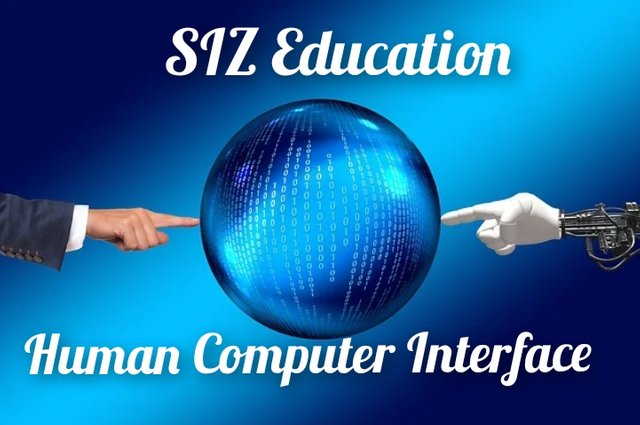Hello Steemians
Hope you all are good. I apologize for few days absence. Now I am posting siz education post. I hope you like it.

Human Computer Interface
Human Computer Interface (HCI) was previously referred to as the man-machine studies or man-machine interaction. It deals with the planning , execution and assessment of computer systems and related phenomenon that are for human use.HCI are often utilized in all disciplines wherever there's an opportunity of computer installation.
HCI Implement
A number of the areas where HCI are often implemented with distinctive importance are mentioned below −
Computer Science
For design and engineering.Psychology
For theories and analytical purpose.Sociology
For communication between technology and organization.Industrial Design
For interactive products like mobile phones, microwave , etc.
The world’s leading organization in HCI is ACM − SIGCHI, which stands for Association for Computer Machinery − Interest Group on Computer–Human Interaction. SIGCHI defines computing to be the core discipline of HCI. In India, it emerged as an interaction proposal, mostly based within the field of Design.

Source
Objective
The intention of this subject is to find out the ways of designing user-friendly interfaces or interactions. Considering which, we'll learn the subsequent
Ways to style and assess interactive systems.
Ways to scale back design time through cognitive system and task models.
Procedures and heuristics for interactive system design.

Source
Historical Evolution
From the initial computers performing execution to the user-centric design, there have been several milestones which are mentioned below:
Early computer (e.g. ENIAC, 1946) − Improvement within the H/W technology brought massive increase in computing power. People started thinking on innovative ideas.
Visual Display Unit (1950s) − SAGE (semi-automatic ground environment), an defense system of the USA used the earliest version of VDU.
Development of the Sketchpad (1962) − Ivan Sutherland developed Sketchpad and proved that computer are often used for quite processing .
Douglas Engelbart introduced the thought of programming toolkits (1963) − Smaller systems created larger systems and components.
Introduction of word processing system , Mouse (1968) − Design of NLS (oNLine System).
Introduction of private computer Dynabook (1970s) − Developed smalltalk at Xerox PARC.
The idea of metaphor − Xerox star and alto were the primary systems to use the concept of metaphors, which led to spontaneity of the interface.
Direct Manipulation introduced by Ben Shneiderman (1982) − First utilized in Apple Mac PC (1984) that reduced the probabilities for syntactic errors.
Vannevar Bush introduces Hypertext (1945) − To denote the non-linear structure of text.
Multimodality (late 1980s).
WWW (1989) − the primary graphical browser (Mosaic) came in 1993.
Ubiquitous Computing − Currently the foremost active research area in HCI. Sensor based/context aware computing also referred to as pervasive computing.

Source
Roots of HCI in India
Some ground-breaking Creation and Graphic Communication designers started showing interest within the field of HCI from the late 80s. Others crossed the edge by designing program for CD ROM titles. a number of them entered the sector by designing for the online and by providing computer trainings.
Even though India is running behind in offering a longtime course in HCI, there are designers in India who additionally to creativity and artistic expression, consider design to be a problem-solving activity and like to figure in a neighborhood where the demand has not been met.
This urge for designing has often led them to urge into innovative fields and obtain the knowledge through self-study. When HCI prospective arrived in India, designers use techniques from usability assessment, user studies, software prototyping, etc.
Thank you for reading my post.